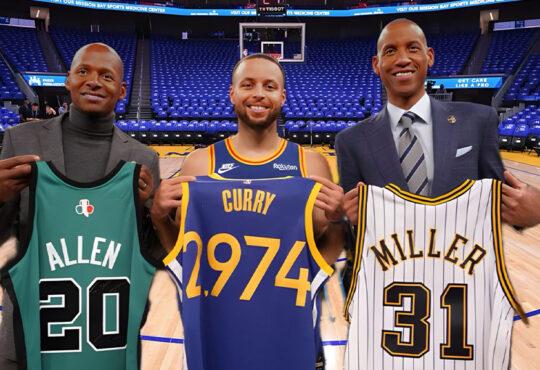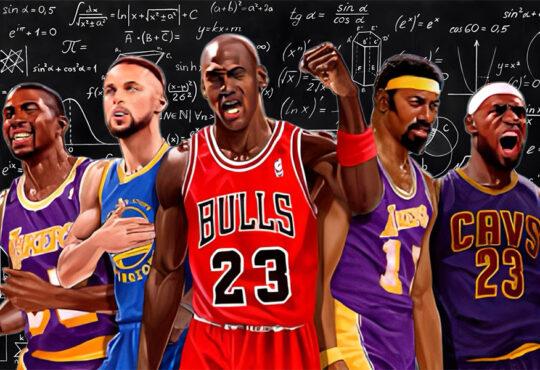
How do NBA pensions work?
How do NBA pensions work? The life of an NBA player is, for the most part, quite glamorous. From playing a game they love day-in and day-out, to traveling across the country, to getting paid a healthy sum for their efforts. However, basketball, as with many other sports, is not a long-term endeavor, and unfortunately for many players, whether due to injury, age, or fatigue, will be forced to retire and quit the game, typically in their mid-thirties.
But what exactly do NBA players do after they retire?
While for many of us casual players, a couple of pick-up basketball games is enough to leave us sore and bruised for days to come, NBA players are oftentimes expected to play back-to-back games while traveling between states and away from their family and loved ones as they play in different areas.
And while basketball is generally considered a beneficial sport, the sheer amount of games, practices, and exercises required to compete in the NBA takes a heavy toll on the body and can lead to fatigue and exhaustion.
While NBA players are generally some of the highest-paid athletes in the world, making on average over $91,000 per game, the NBA does have a pension plan in place for former players. Since 1965, the NBA has had a pension plan in place for former and retired players with at least three years of play in the league.
In addition, the NBA league offers former and retired players access to additional benefits, including lifelong healthcare coverage, college tuition reimbursement, and access to additional physical and mental benefits.
Since 2017, the NBA pension plans increased nearly 50 percent for players who begin receiving payments starting at 50 years old. As an incentive, players who push back on their eligibility to receive this plan will receive corresponding yearly increases.
Before 2017, players aged 50 years old were paid out $559 per month, per year of play in the league. However, under the updated rules, the league now pays out more than $800 per month, per year of play in the league. This means that a former, retired NBA player who played for five years in the league would be eligible for $4,000 per month once they reach the age of 50.
NBA players have had a pension plan since 1965. The retirement benefit amount depends on the number of credited seasons and is fully vested after 3 years. After 10 seasons, players earn the maximum benefit payable by law. The plan considers age 50 to be the standard retirement age, but as early as age 45 players may begin receiving reduced benefits, reflecting that they will probably receive them for a longer time.
Do Many NBA Players Go Broke Once They Retire?
In the NBA, and unlike in the NFL, many player contracts are signed as guarantees. This means that an NBA player will be fully entitled to their contract, regardless of injury or inability to play. This is in stark contrast to the NFL, wherein NFL players’ contracts are not fully guaranteed.
However, simply because NBA players’ contracts are fully guaranteed, does not mean that they do not incur financial stress after they retire from the league. In the most recent report, upwards of 60% of all former NBA players faced financial distress within five years of retiring from the league.
And while, for many of us, such fortunes can be difficult to conceive and even more difficult to spend, for NBA players, the allure of keeping up with their teammates may simply be too difficult. As former NBA player Daniel Schayes stated, “guys go broke because they surround themselves with people who help them go broke.”
And similarly, for many NBA players, their length of time in the NBA is simply too short to ensure adequate, long-term earnings. On average, NBA players will play in the league for five years, a time in which they will need to properly save and invest for their futures, which can be difficult to do when surrounded by other players who spend at such high levels.
And lastly, for so many NBA players, the influx of wealth oftentimes brings about an influx of attention from friends and acquaintances looking to take advantage of their newfound wealth. For many NBA players, incorrect financial advice and people looking to take advantage of them have led them to make costly investment mistakes, oftentimes resulting in the loss of several millions of dollars.
How Retired NBA Players Are Escaping Post-Career Financial Troubles
Ten years ago Sports Illustrated published a haunting feature on the dark reality of many professional athletes’ finances. Lucrative contracts consistently melted into the exhaust pipes of luxury vehicles. Hundred-thousand dollar investments in quirky inventions quickly evaporated. Full fortunes were sliced through divorce settlements.
Within a half-decade of retirement, an estimated three out of five former NBA players were going broke.
“Sixty percent is a ballpark. But we’ve seen a lot of guys who’ve really come into hard times five years after they leave the league,” Roy Hinson, a former NBA player, and current NBPA senior regional director, told the Toronto Star in 2008. “The problems are, for a lot of guys, they have a lot of cars, they have multiple houses, they’re taking care of their parents. They’re taking care of a whole host of issues. And the checks aren’t coming in anymore.”
The union says that number is no longer accurate, and although it did not provide a current statistic for this story, the NBPA, NBA, and the National Basketball Retired Players Association have since instituted organizational structures and initiatives to combat what was once considered a financial pandemic. Since the 2011 collective bargaining agreement negotiations, the NBPA has implemented new or improved bridge annuity, pension, 401(k) match, health insurance, and tuition assistance programs. Membership within the RPA doubled from 2012 to 2016. The salary cap boom, which resulted in 70.8% growth for the deals of top-25 players from 2011 to 2018, has placed an even greater emphasis on financial literacy.
“As an older player, a lot of young guys, at least the conversations in the locker room, were more about finances and sharing and exchanging ideas and talking about wealth preservation and various things,” says Hall of Fame forward Grant Hill, who retired in 2013. “Technology and having access to information, that means the horror stories, the examples of those who didn’t fare so well, and learning about the nuances of the success stories of wealth creation. It helped in terms of being a valuable resource.”
Virgil Rutili is a Chicago-based wealth advisor, serving nearly 20 NBA and NHL players holding salaries from $100,000 to $6 million. “We’re patient,” Rutili says. “We try to get the banking and the budgeting and the planning right for the player so that everything is easy and simple.” His Centric Wealth Management focuses on educating those players on how to understand the markets. The firm sends daily emails with a movement summary. “We’re spending a lot of time educating these guys and then we have to build a significant liquidity cushion because there’s a ton of uncertainty,” Rutili says. “You take risk where you can withstand it. I just don’t think these young guys who aren’t established can.”
Instead, Centric helps its clients construct automatic savings plans, fully funding their 401(k)s and capitalizing on after-tax contributions NBA or NHL plans allow, rolling that money into a Roth IRA. “We turn some people off because they want to get in the game right away and they want to see their money make money,” Rutili says. After establishing that foundation, the firm layers other savings into customized, risk-managed portfolios.
The Retired Players Association used to struggle to be seen as well. Yet since its dramatic membership increase at the onset of this decade, it has steadily maintained close to 1,000 members. The RPA is not a union, leaving members to pay yearly dues of $250 or one-time lifetime fees of $3,500. Any player who has held an active NBA or WNBA roster spot can join for education and career development programs, social activities at major NBA calendar events, community outreach programs, paid opportunities, and royalties.
The NBPA made national headlines in 2016 when its representatives voted unanimously to fund health insurance for all retired NBA players with at least three years of service in the league. Since 2001, the NBPA has deposited large sums into its players’ health reimbursement accounts, reserved for any health expense for them or their families. Some accounts have soared and reached the high six figures. The union is hoping to soon debut a long-term care benefit.
In 2011, the NBPA launched its bridge annuity program, partitioning 1% of basketball-related income for its pool of retirees from the time they officially walk away from the game until they reach the age of 50. With annual BRI surging to well over $7 billion, that would leave greater than $70 million to be redistributed into the annuity program with Principal Financial Group. “The amounts have gone up significantly,” says Ron Klempner, senior counsel at the NBPA. The union pays any existing taxes on those funds, and active players can invest up to 10% of their salary into that annuity as well. “You couldn’t go out on the street and buy an annuity-like that,” Klempner says. The league’s pension fund was recently supersized to the maximum allowed by law and the most aggressive interest rate available. The benefit stands at over $850 a month for each year of service a player holds, meaning a 10-year veteran can gross $8500 a month, or about $100K a year. Through Voya, the union’s 401(k) matches at 140%.
As of 2016, the union will reimburse a player $101,000 in tuition to finish an incomplete undergraduate degree. They offer programs in entrepreneurship and broadcasting with Syracuse University. It holds a coaching program at the NBPA Top 100 camp at the University of Virginia, where active players who hope to later pivot into basketball operations can coach the nation’s premier prospects. The union’s leadership development program in Las Vegas during Summer League introduces players to the NBA’s leading front-office executives as Klempner teaches them about the inner workings of the CBA, salary cap, and free agency.
Four retired players, TJ Ford, Bobby Simmons, Jeff Lamp, and Lloyd Walton serve as regional representatives, attending games and team meetings, solely focusing on career transition for the players.
Twelve-year veteran Antonio Davis has spearheaded the NBPA’s Off The Court program. The power forward was keen on packaging the idea as a way to help expand players’ horizons, rather than prepare for the day one must forever untie his sneakers. “I didn’t want guys feeling like, when I talked to them, I was gonna be like the grim reaper,” Davis says. The program generally assesses players in an exit-interview setting, helping players maintain their families, mental health, physical health, and finances off the court.
After retiring in 2006, Davis realized a slew of players seeking one last paycheck overseas, or through general disengagement from basketball, were becoming entirely detached from the union, ignoring the menu of benefits the NBPA provides. Last October, Davis flew six players to New York for a workshop, breaking down the full benefits package, updating their contact info for their annuity, and educating them on the newly established healthcare system. Several players were unaware they qualified for the union’s free services. “We started solving some issues right there,” Davis says.
He has continued polling active players about their financial needs and charitable endeavors. Davis has jetted around the country to discuss life insurance and estate planning with athletes. How can he help their post-career development? What do they want to do with their lives? Davis is the latest actor in a confluence of efforts to combat the pitfalls that were once synonymous with NBA retirements. “Everybody knew that the issue was there,” he says. “I just don’t think anybody knew about how to approach it.”







